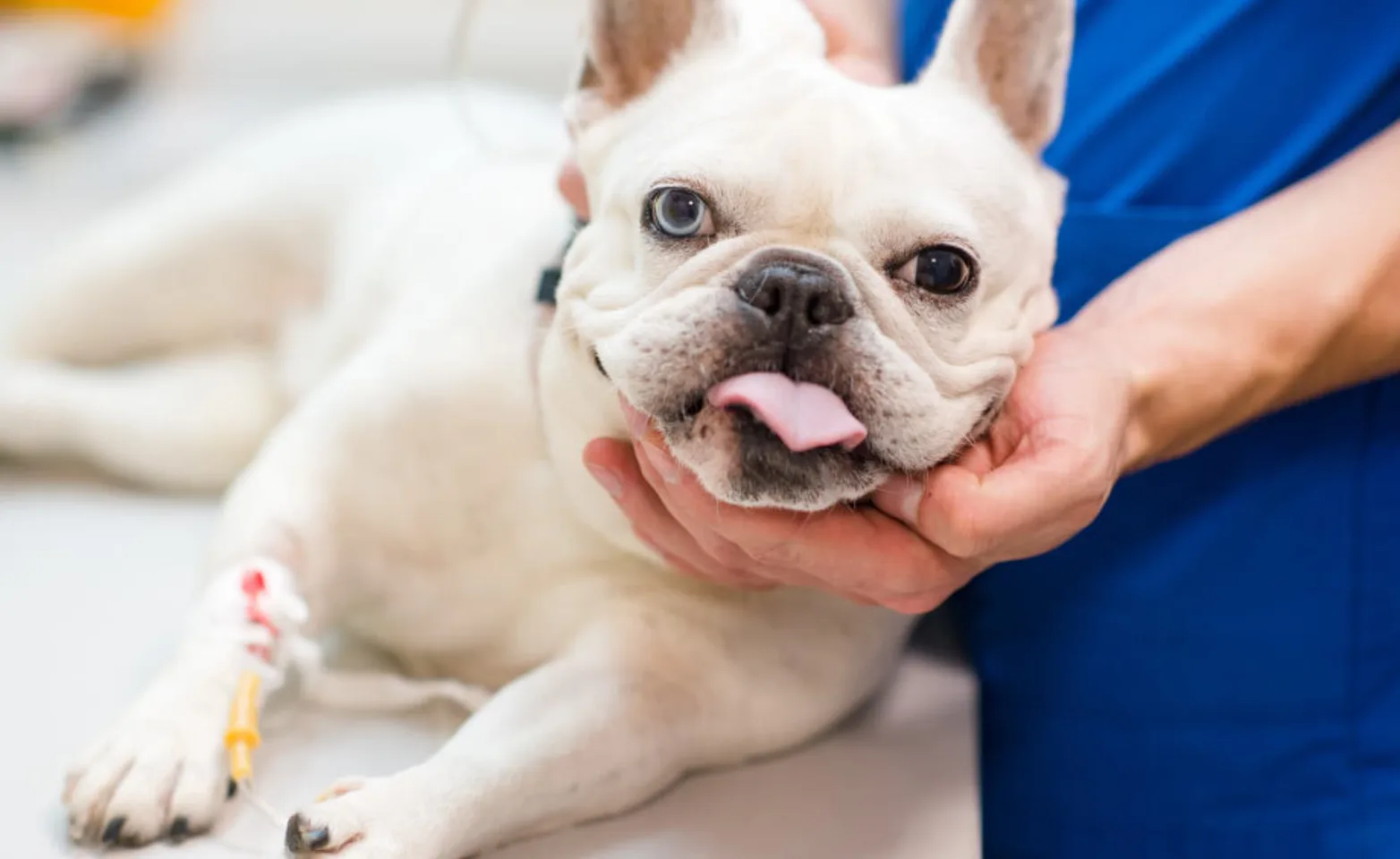Small Animal Hospital
If we could talk to the animals, one of their wishes might be health care without the need for anesthesia.
We could picture an English Bulldog reclining in the dentistry chair, complaining about his weight loss plan while his teeth are tended to. Imagine the Tom cat getting stitched up under local anesthesia after his latest fight exclaiming “You should have seen the other guy, Doc!”.
Although anesthesia is a daily event in veterinary practice, there are many misconceptions about its use. We would like to help you understand the procedure and risks so you can make informed decisions about your pets’ care.
Anesthesia is the use of drugs to bring an animal into a state of unconsciousness, so they are able to tolerate a medical procedure. Although there are different types, the most commonly used protocols combine injectable drugs and inhalant gas.

Before undergoing anesthesia, it’s important that the animal be in a calm state of mind; not stressed by fear or aggression. Combinations of drugs are used to calm your pet and decrease overall requirements of individual drugs and inhalant gas.
The sedation extends beyond the influence of the gas, easing your pet into and out of the major part of the procedure. One advantage of long-lasting sedation is that it gets the recovery off to a good start, and it may keep the pet from re-injuring itself upon awakening. This is why your pet may still be sleepy when arriving home.
The major part of anesthesia is accomplished by letting the animal inhale anesthetic gas and oxygen through an endotracheal tube placed into the trachea or windpipe. The effects of the gas extend just beyond the time of treatment/surgery.
The risks of anesthesia, while rare, may range from minor allergic reaction, undetectable and temporary injury to certain organ systems, to death.
While the risk of anesthesia is certainly minimal in healthy patients, there are several situations where adverse reactions can occur. Age is not a disease, but geriatric patients pose slightly higher risk because of potential organ dysfunction. The geriatric pet is actually the most common type of patient we anesthetize, because of their increased need for medical care. Because anesthetic agents cause unconsciousness, animals which are compensating for an undiagnosed condition may be unable to compensate for their disease while under anesthesia. For example, a cat with heart disease which appears healthy on physical exam because it is coping by making its heart work harder may be unable to do so under anesthesia. In addition, some animals, like people, may be allergic to certain anesthetic medications and may suffer an allergic reaction ranging from swelling to anaphylactic shock. These cases are rare (the overall risk of anesthetic death in dogs and cats is 0.1% or 1 in 1,000) but are something you should be aware of to make an informed decision regarding anesthesia for your pet. Diagnostic tests such as blood work can help us make decisions as to the safest anesthesia for your older pet. While these precautions add to the cost of anesthesia for older animals, they allow the life-extending benefits of such procedures as dentistry to be given to all our pets.
Your pet’s vital parameters are monitored during anesthesia by a certified technician or veterinarian. We use many of the same parameters used by human anesthesiologists such as blood oxygen saturation, heart rate, blood pressure, EKG tracing and respiratory carbon dioxide concentration.
No discussion of anesthesia can be complete without a few words on the pet owner’s responsibilities:
Follow your veterinarian’s instructions on preparing your pet for surgery. If there is a no-food instruction, make sure you deliver a pet with an empty stomach. Following this one piece of advice is one of the easiest and most basic ways to reduce risk.
Be prepared to provide special home care for your pet after surgery. It is common practice for veterinarians to release animals before the pre-anesthetic sedation wears off. Such animals must be kept safe from extremely hot or cold environments. If you do not feel comfortable caring for a sedated pet, arrange for your veterinarian to extend the care.
Don’t hesitate to ask questions. Make sure you understand what the procedures are and what to expect. For example, it is common for pets to cough after anesthesia, since the endotracheal tube used to deliver the gas may cause some irritation. If the cough does not clear up in a couple of days, call our office at (414) 276-0701.
